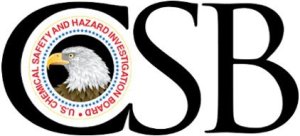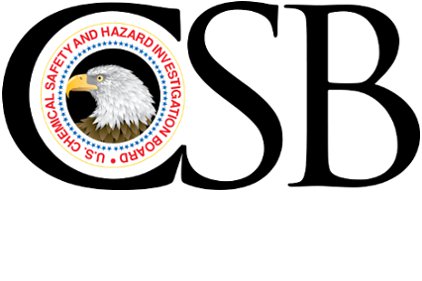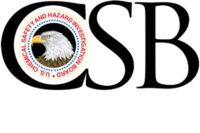 In a public meeting yesterday, members of the U.S. Chemical Safety Board declared the response by OSHA to seven longstanding recommendations – on combustible dust, fuel gas and the Process Safety Management standard – to be “unacceptable.” The Board also voted to make the adoption of a combustible dust standard for general industry to be the first priority in the CSB’s recently established “Most Wanted Safety Improvements” program, which will result in stepped-up advocacy for the measure.
In a public meeting yesterday, members of the U.S. Chemical Safety Board declared the response by OSHA to seven longstanding recommendations – on combustible dust, fuel gas and the Process Safety Management standard – to be “unacceptable.” The Board also voted to make the adoption of a combustible dust standard for general industry to be the first priority in the CSB’s recently established “Most Wanted Safety Improvements” program, which will result in stepped-up advocacy for the measure.
Combustible dust standard is top concern
CSB Chairperson Rafael Moure-Eraso said, “Over the years, the CSB has made a number of recommendations to OSHA in the aftermath of tragic accidents that have killed dozens of workers, injured hundreds more, and caused millions of dollars in property damage. We are particularly concerned with the lack of action on a much-needed combustible dust standard. Yet insufficient progress has been made, and many years have passed in some cases, without a definitive OSHA response. Today’s vote by the board designating OSHA’s responses to be “open-unacceptable” means that we strongly believe these recommended regulatory changes are still needed to save lives and prevent accidents in the chemical industry. At the same time, we voted to keep the recommendations’ status as “open,” as we take heart in comments made by OSHA today that they may consider action in the future.”
The status change action by the CSB concerned the following original recommendations to OSHA:
-Recommendation to ensure coverage under the Process Safety Management (PSM) standard for atmospheric storage tanks that could be involved in a potential catastrophic release as a result of being interconnected to a covered process with 10,000 pounds of a flammable substance. The recommendation was issued in 2002 following the CSB’s investigation of a 2001 explosion of a poorly maintained, corroded storage tank containing spent sulfuric acid and flammable hydrocarbons at the Motiva refinery in Delaware City, Delaware. A worker was conducting hot work which ignited vapor through holes in the deteriorated tank.
- Recommendation to revise the PSM standard to require management of change (MOC) reviews for organizational changes such as mergers and acquisitions that may impact process safety. This recommendation, issued in 2007, followed the 2005 explosions and fire at the BP Texas City refinery which killed 15 workers and injured 180 others.
- Recommendation that OSHA issue a fuel gas safety standard for construction and general industry. This recommendation, issued in June 2010 followed two catastrophic accidents that occurred that year. In one, an explosion caused a roof collapse at the ConAgra Slim Jim facility in Garner, North Carolina, killing four workers and injuring 67 others. A worker had been attempting to purge new natural gas piping during the installation of an industrial water heater, resulting in a large release of natural gas indoors. In the other, at the Kleen Energy power plant in Middletown, Connecticut, high pressure natural gas was being used to clean new piping and was released in a congested outdoor area. It ignited, killing six workers and injuring at least 50.
Longstanding recommendations
The Board then voted OSHA’s response as “open-unacceptable” to four longstanding recommendations calling for the issuance and expedited action on a comprehensive general industry combustible dust standard.
The first of these recommendations was issued in 2006 following a CSB study on the hazards of combustible dust. The study was initiated following a series of major explosions and fires with a large loss of life and numbers of burn injuries. The CSB found companies ignoring the hazard or failing to take adequate action to mitigate the danger. The Board advocated a new standard be based on existing National Fire Protection Association (NFPA) dust explosion standards.
Three years later, in 2009, following an explosion of combustible sugar dust at the Imperial Sugar Company in Port Wentworth, Georgia, in 2008 killing 14 workers, the CSB called on OSHA to “proceed expeditiously” on its then-announced intention to conduct rulemaking on a dust standard.
In December 2011, the CSB again called on OSHA to move on a dust standard following a series of three iron-dust related flash fires at the Hoeganaes Corporation facility in Gallatin, Tennessee. Five workers lost their lives. The CSB called for the inclusion of metal dusts in the scope of any new standard on dust, and recommended that OSHA issue a proposed rule within one year of the issuance of the recommendation.
Chairperson Moure-Eraso said, “The Board has called on OSHA a number of times over the past several years to act on this known, insidious hazard that continues to claim the lives of workers and cause enormous damage and loss of jobs. It’s critical that OSHA address the recommendations.”
Dust standard is “Most Wanted”
The Board also designated the issuance of a general industry dust standard as the CSB’s first “Most Wanted Safety Improvement.” It was the first time the CSB has made such a designation since approving the new advocacy program last year. Designated recommendations in the program will be subject to more intense agency advocacy efforts.
Dr. Moure-Eraso concluded, “The CSB has a statutory, congressionally mandated task to address the sufficiency of OSHA and EPA regulations. That is a key obligation of the CSB and I intend to continue pursuing this mandate vigorously.”





